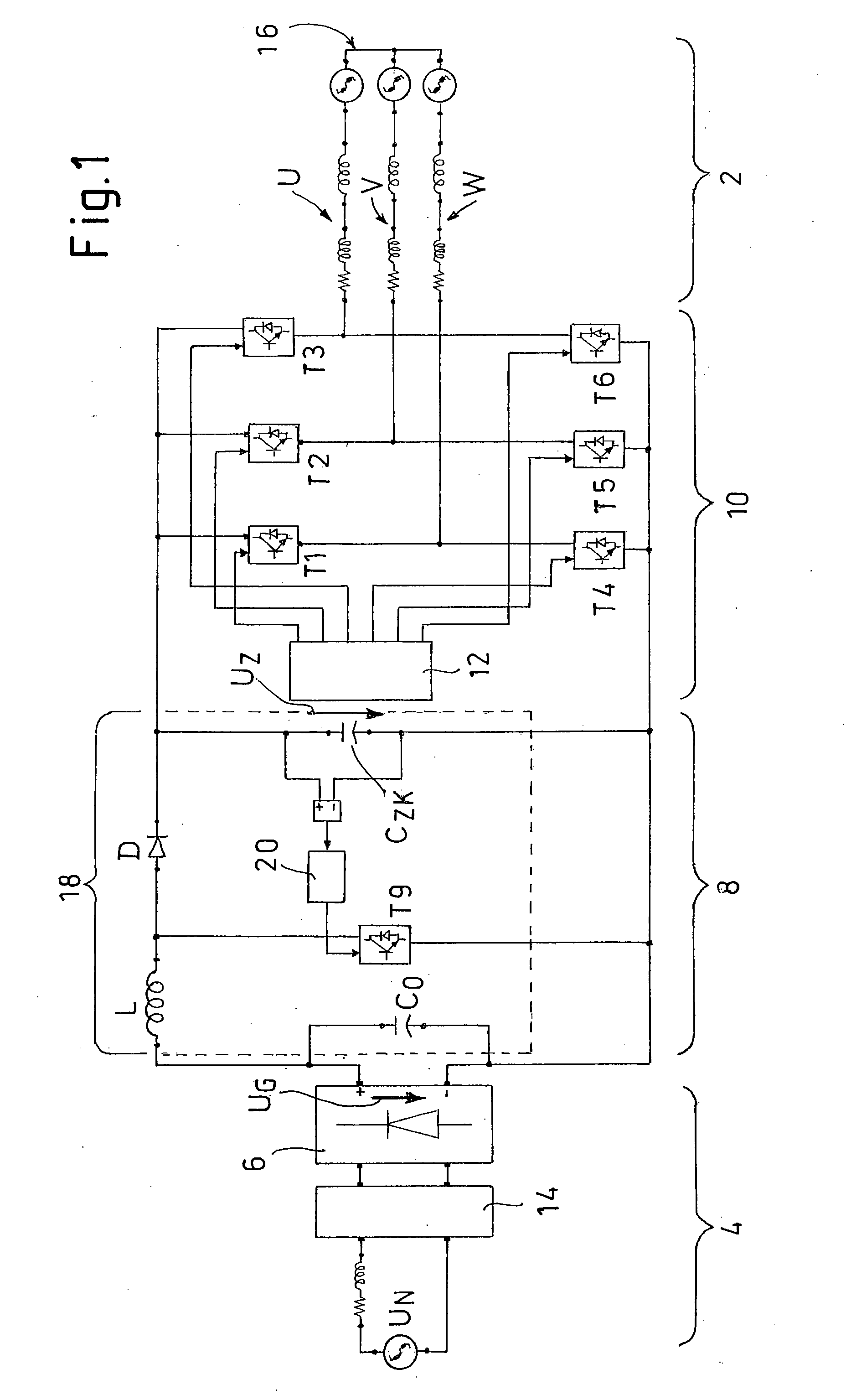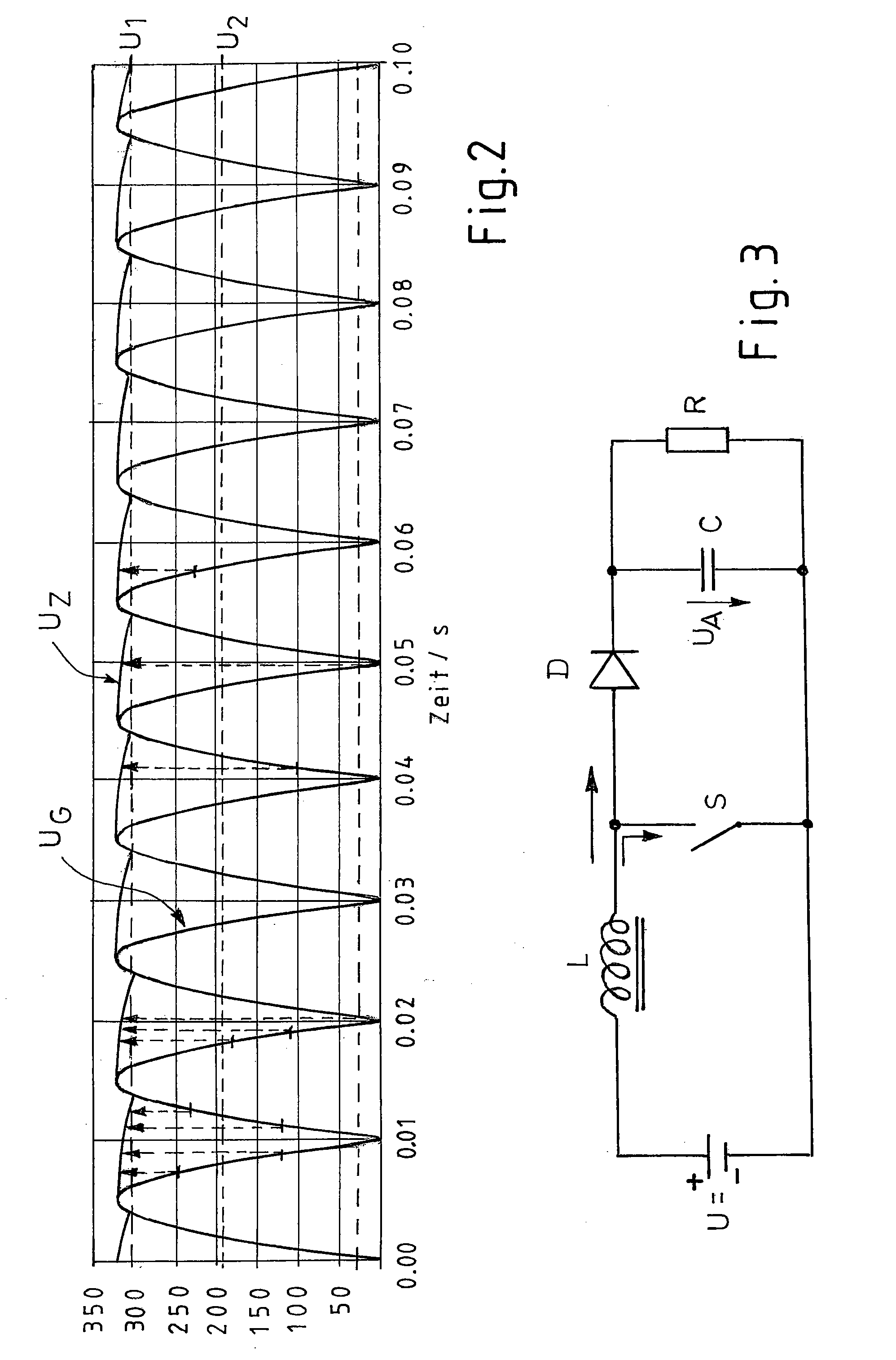Procedures and Control System to Control a Brushless Electric Motor
a technology of electric motors and control systems, applied in the direction of motor/generator/converter stoppers, dynamo-electric converter control, instruments, etc., can solve the problems of short lifetime, large overall size, and extra cost due to the addition of controllable semiconductors
- Summary
- Abstract
- Description
- Claims
- Application Information
AI Technical Summary
Benefits of technology
Problems solved by technology
Method used
Image
Examples
Embodiment Construction
[0047]As follows from FIG. 1, a control system for driving a collectorless electronically commutated electric motor (EC-PMSM=electronically commutated permanent magnet excited synchronous motor) consists of a line voltage supply 4 that rectifies a line AC voltage UN via a network rectifier 6 into a pulsating DC voltage UG (cf. the diagram in FIG. 2). Via a DC link 8, the line voltage supply 4 feeds a controlled inverter 10 (power output stage), which is controlled in a known manner by a control unit 12 for supplying and commutating and, in particular, also for adjusting the speed of the motor 2.
[0048]A line filter 14 in the vicinity of the line voltage supply 4 that reduces high-frequency current oscillations, and thus improves the electromagnetic compatibility (EMV), is drawn in FIG. 1. Only three stator windings U, V, W of the, preferably three-strand, electric motor 2 are shown in an equivalent circuit representation, a star connection with a shared star point 16 being provided i...
PUM
 Login to View More
Login to View More Abstract
Description
Claims
Application Information
 Login to View More
Login to View More - R&D
- Intellectual Property
- Life Sciences
- Materials
- Tech Scout
- Unparalleled Data Quality
- Higher Quality Content
- 60% Fewer Hallucinations
Browse by: Latest US Patents, China's latest patents, Technical Efficacy Thesaurus, Application Domain, Technology Topic, Popular Technical Reports.
© 2025 PatSnap. All rights reserved.Legal|Privacy policy|Modern Slavery Act Transparency Statement|Sitemap|About US| Contact US: help@patsnap.com



